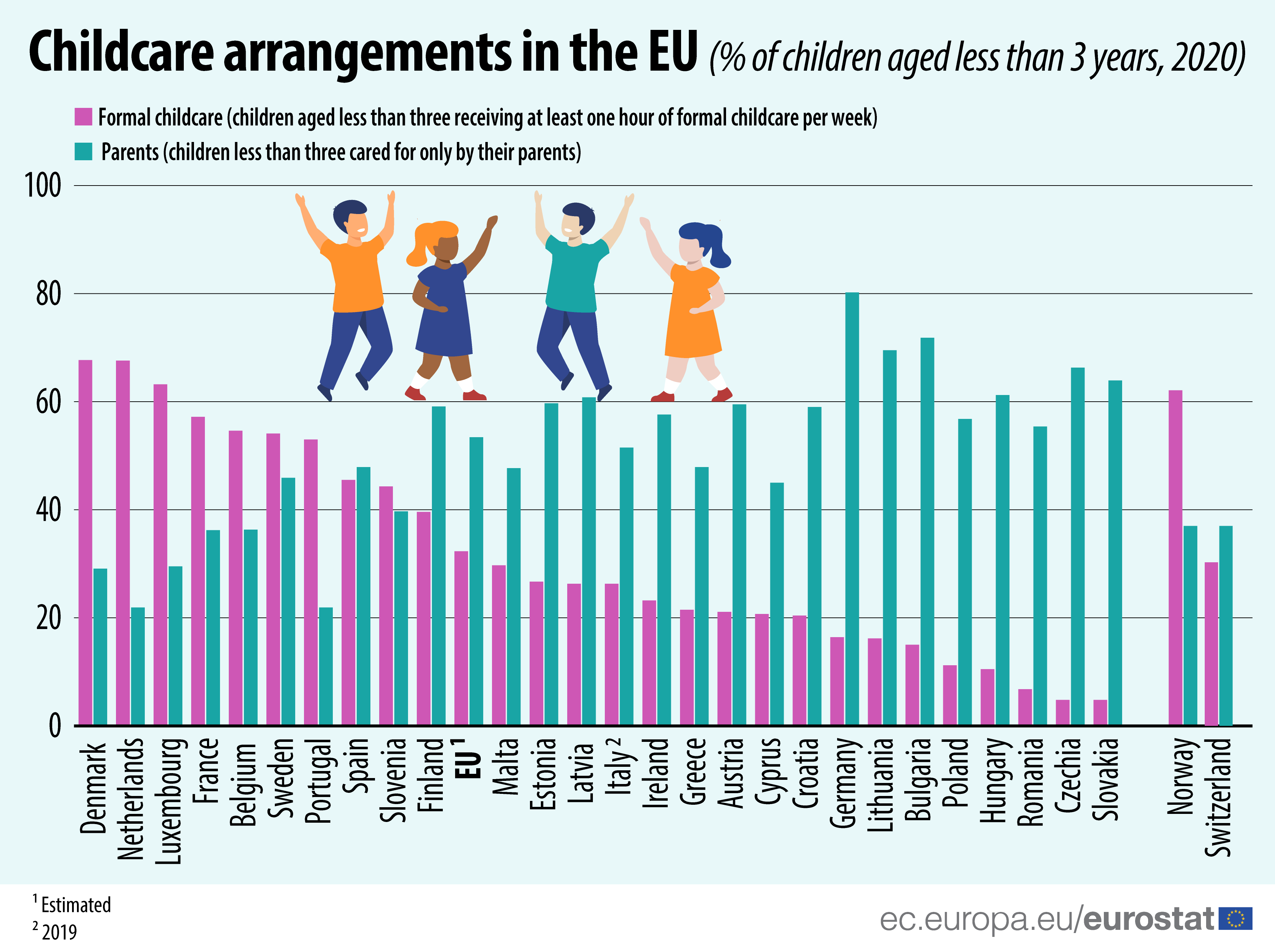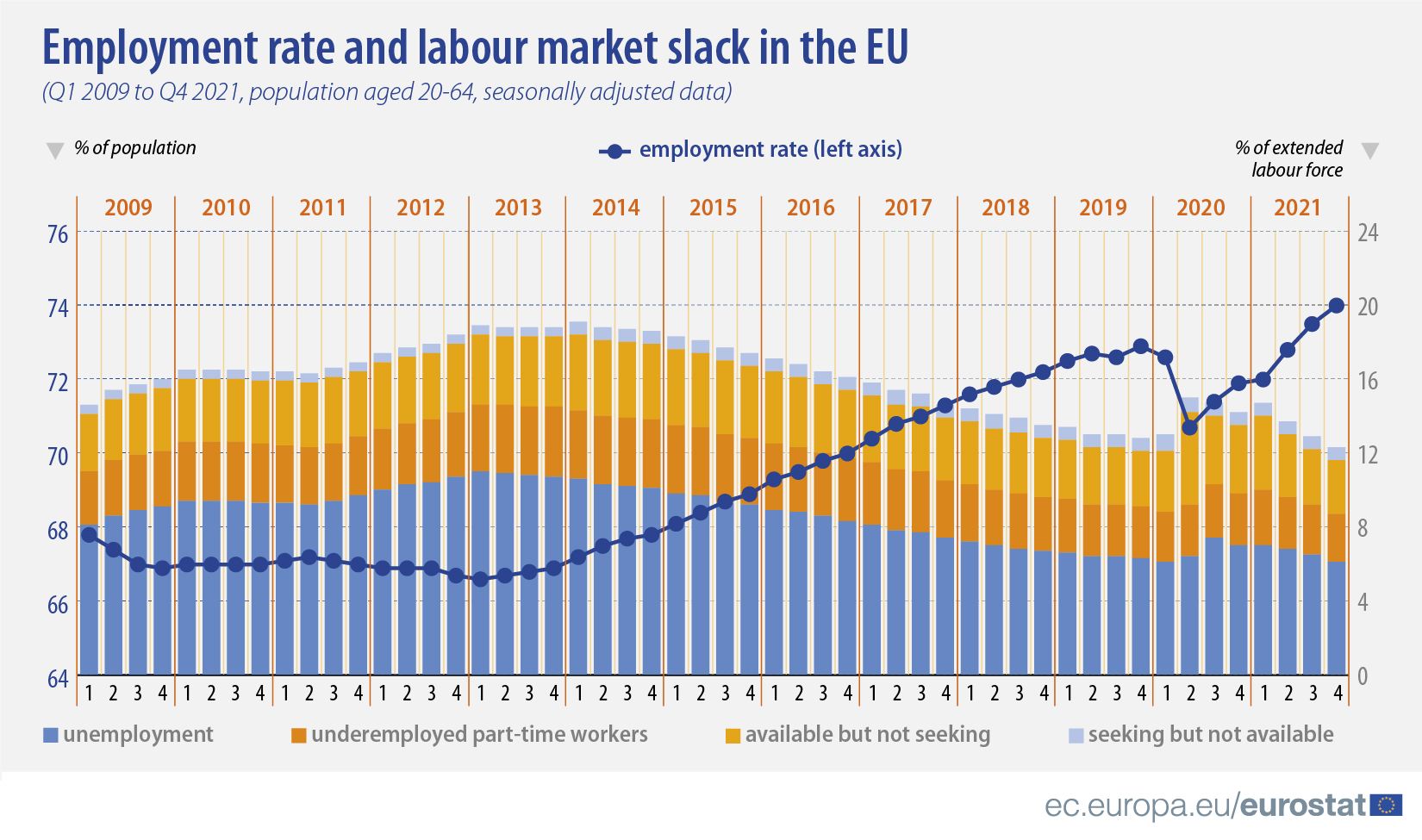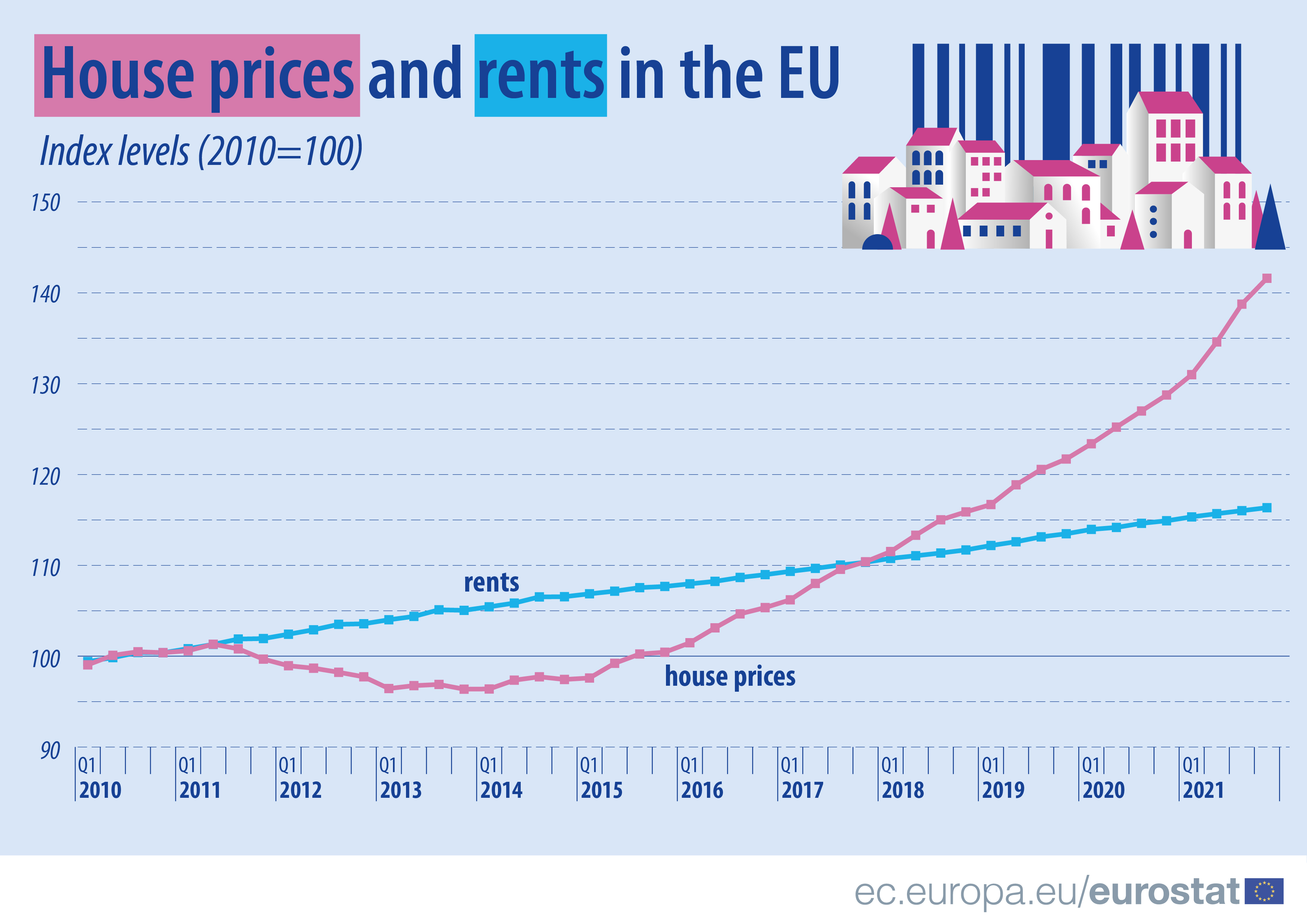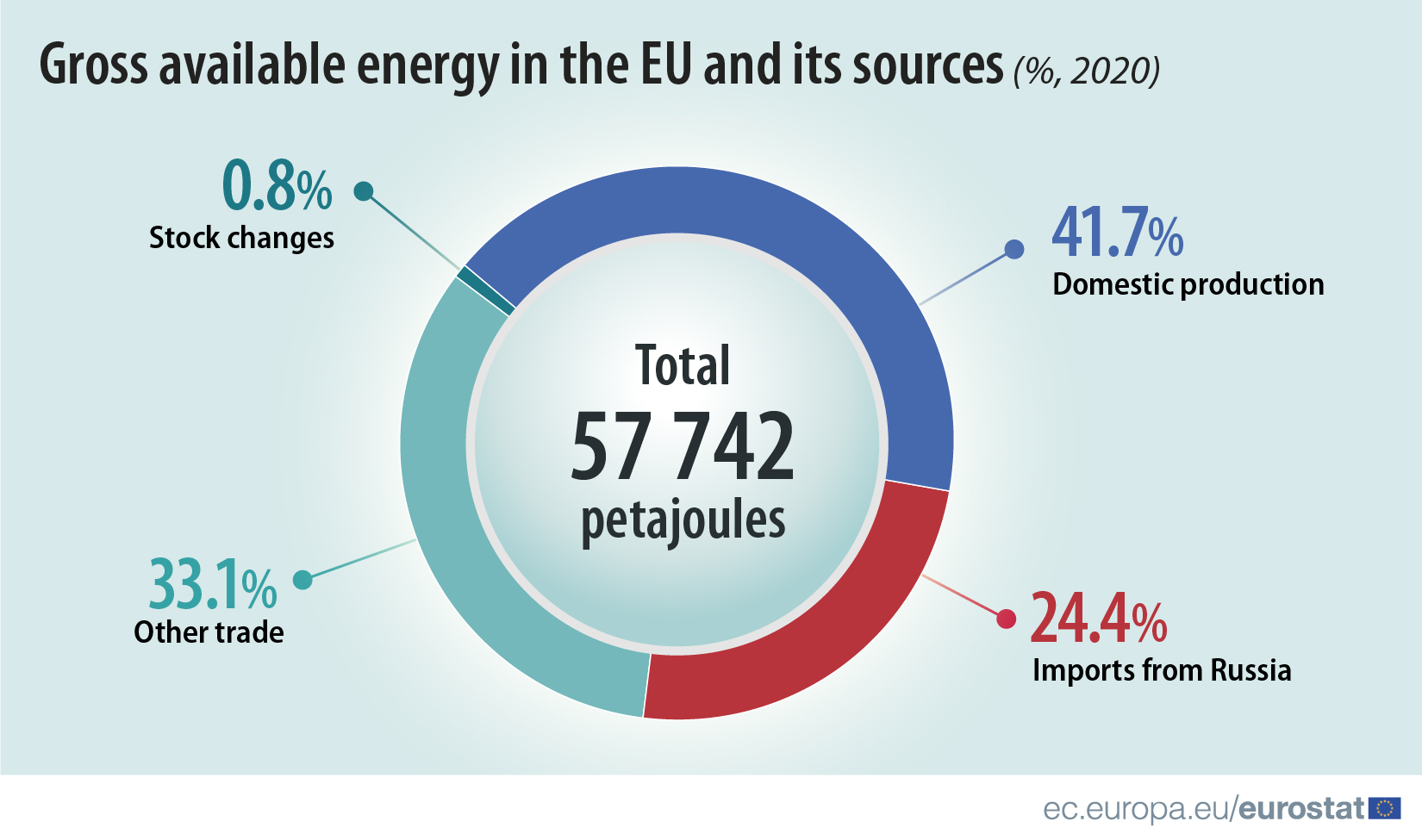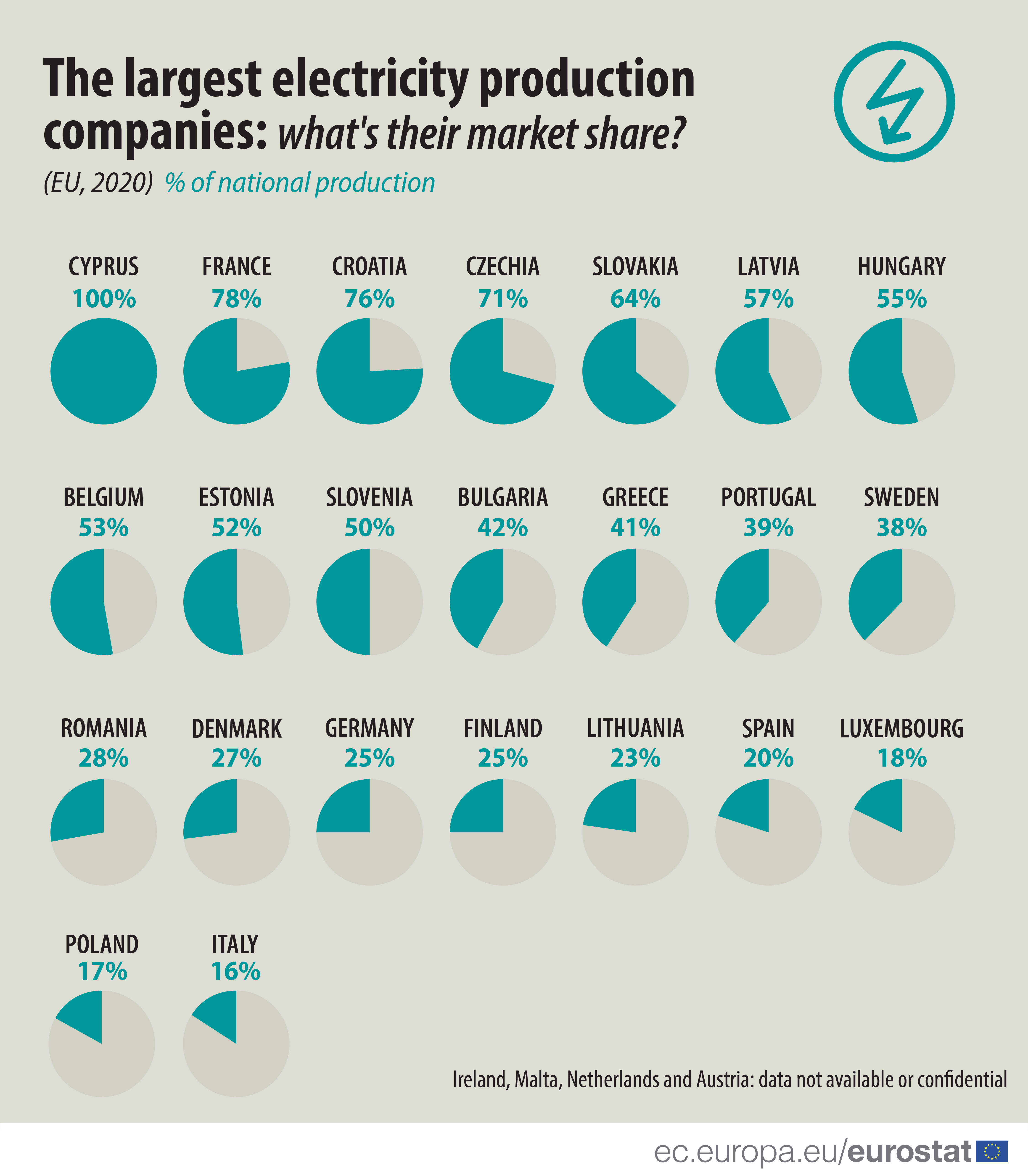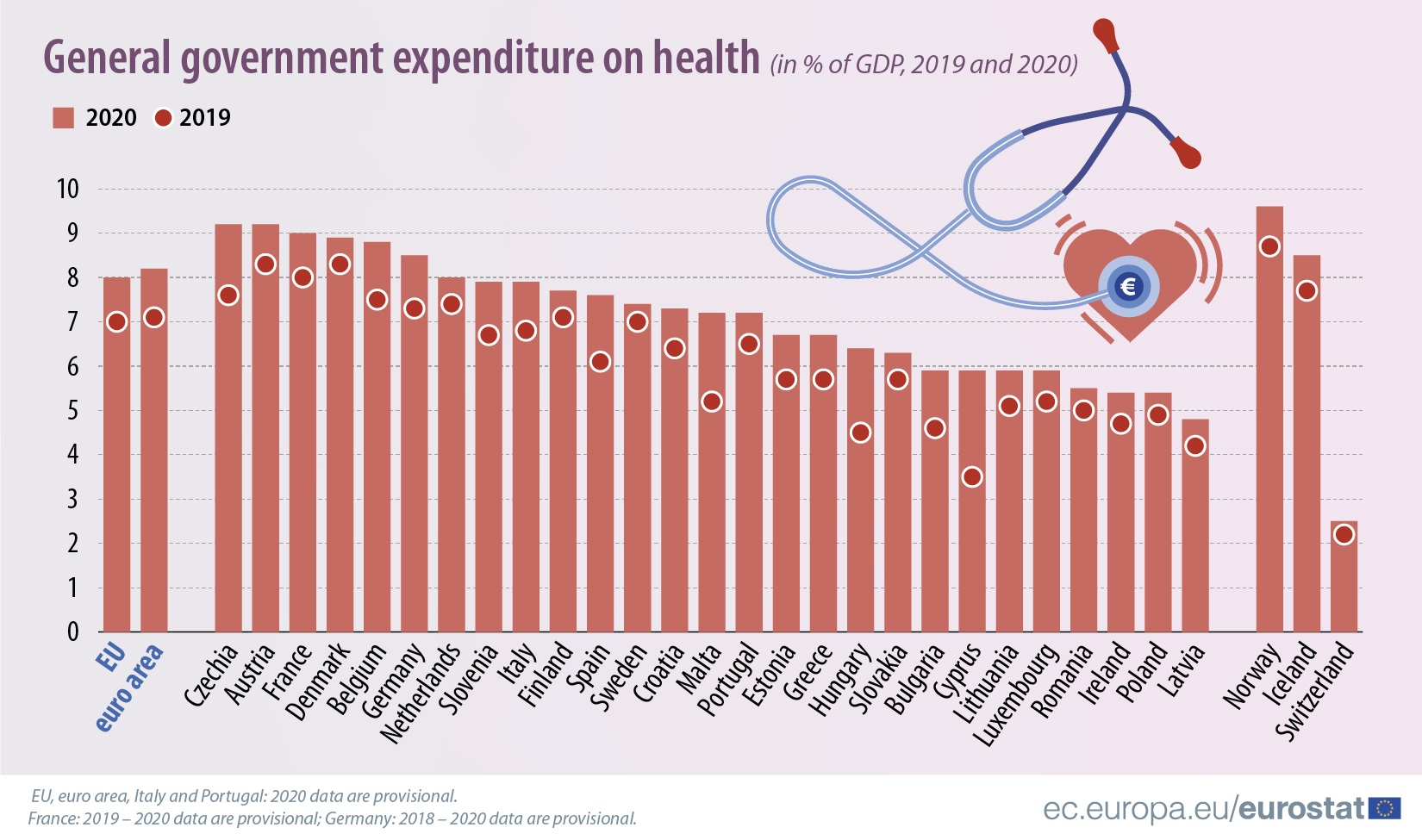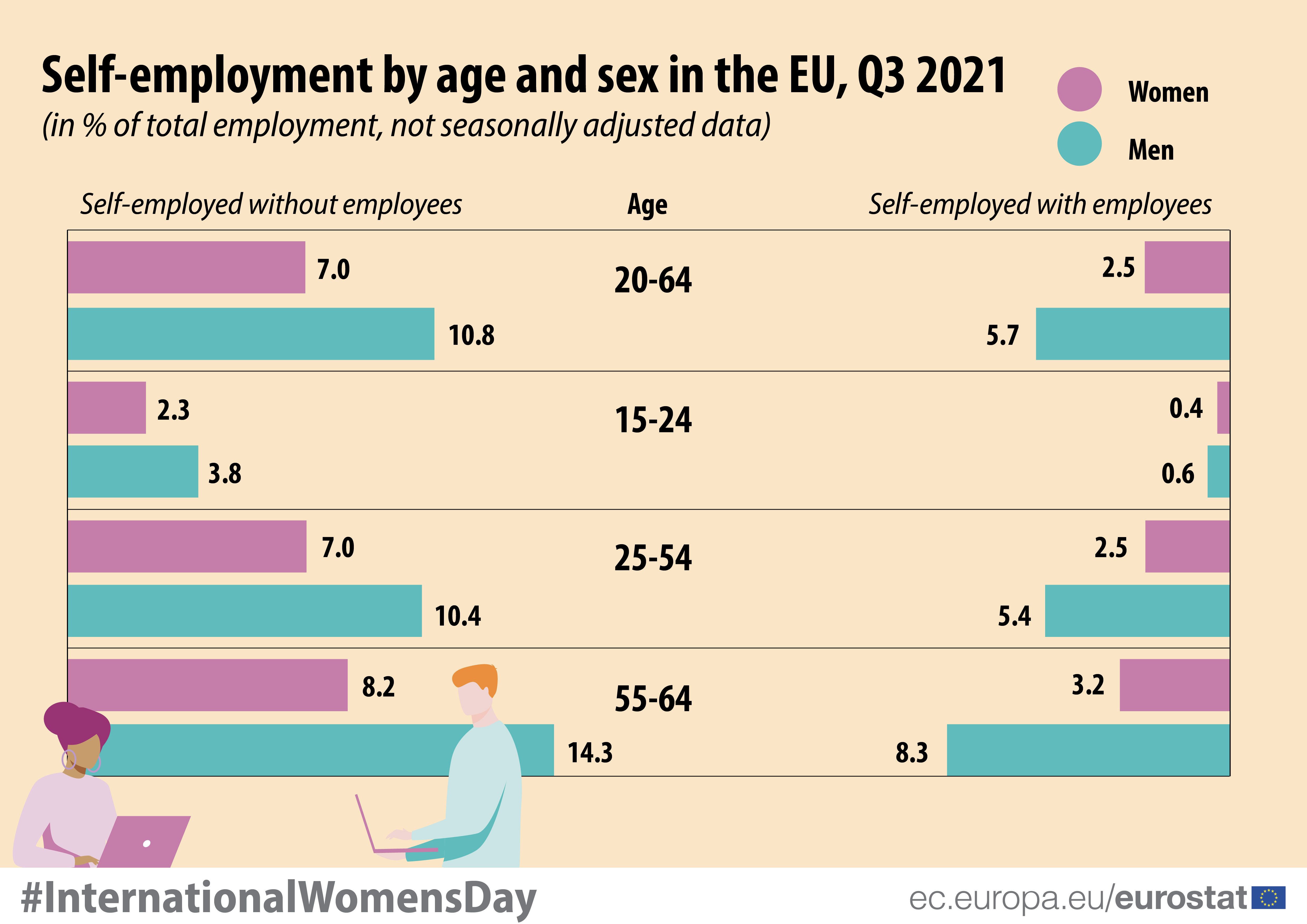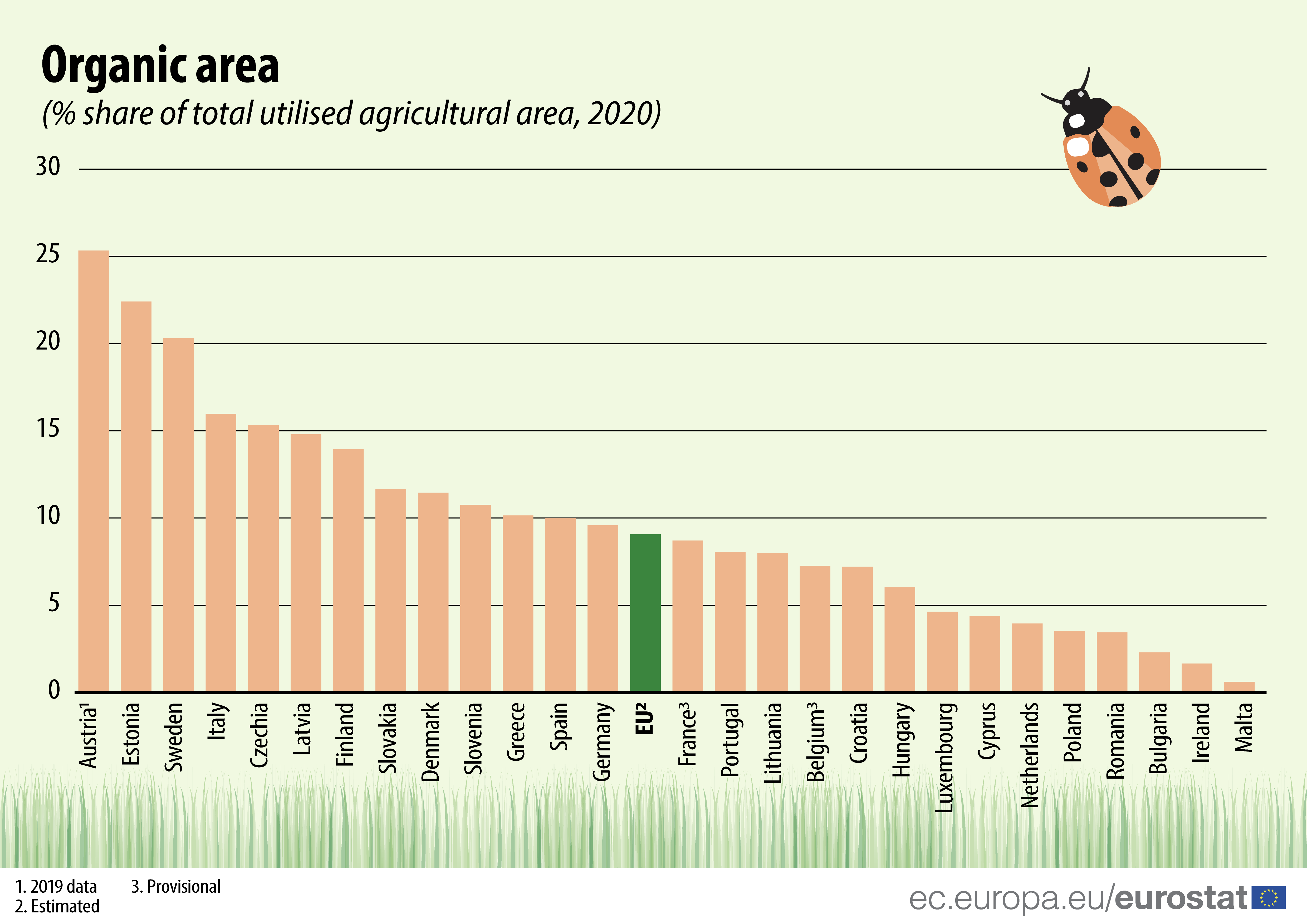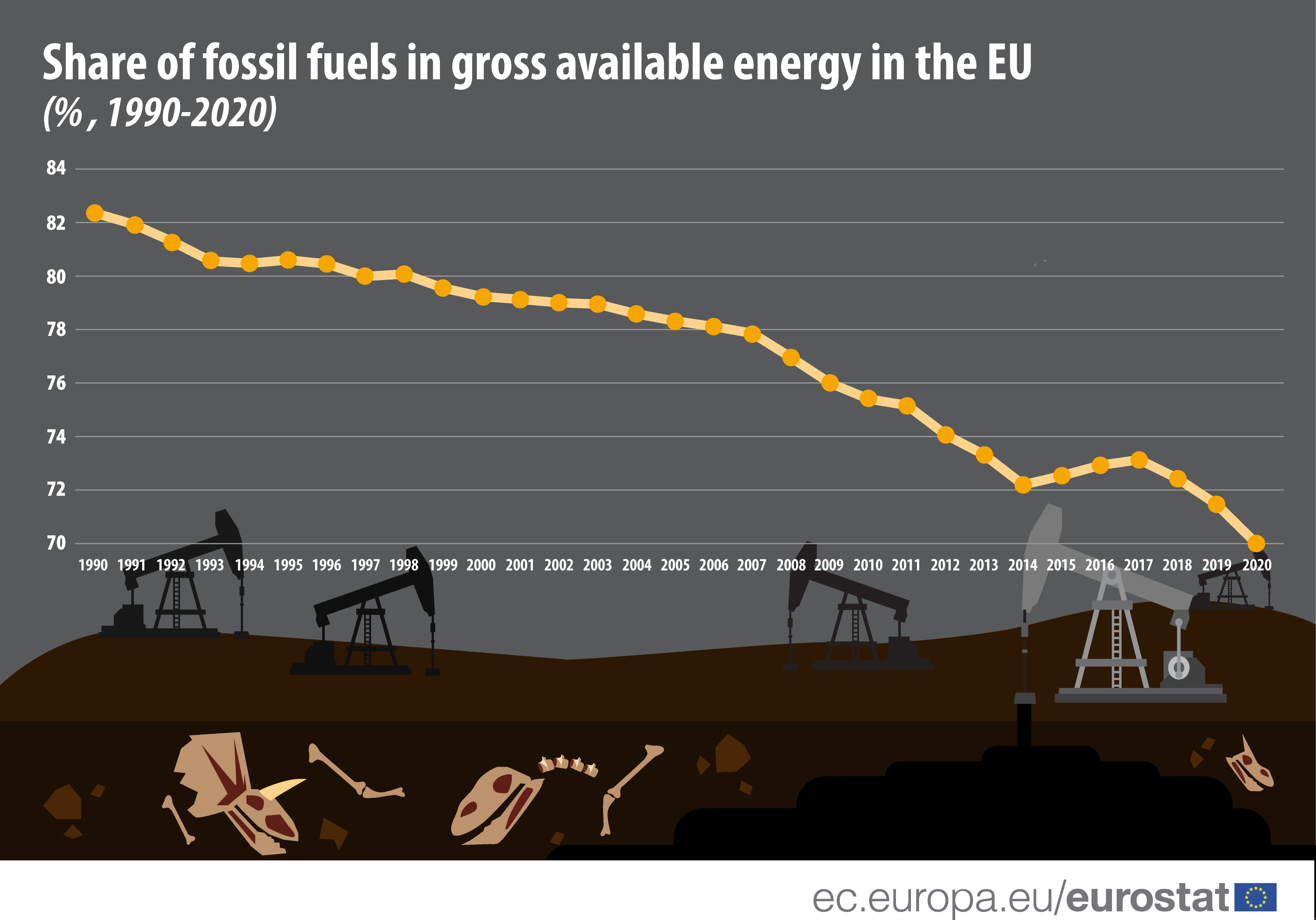In 2020, more than half (53.4%) of all the children aged less than three years in the EU were cared for exclusively by their parents, a 13.4% increase compared with 2019.
Statistics
Since 2010, the emission of greenhouse gases (GHG) per person employed has been on a continuous decline in the EU, which is due to a combination of decreasing GHG emissions and increasing employmen
In the EU, the employment rate of people aged 20-64 stood at 74.0% in the fourth quarter of 2021, which represents an increase of 0.5 percentage points (pp) compared with the third quarter of 2021
Rents and house prices in the EU have continued their steady increase in the fourth quarter of 2021, going up by 1.3% and 10.0% respectively, compared with the fourth quarter of 2020.
In 2020, the EU imported 58% of the energy it consumed, as its own production satisfied only 42% of its needs.
The market shares of the largest electricity and gas producers in the EU have been decreasing in most countries.
Government expenditure on health increased by 1 percentage point (pp) compared with 2019 (8.0% of GDP in 2020 compared with 7.0% of GDP in 2019).
Data on the EU’s labour market in the third quarter of 2021 indicate that men were more likely to be self-employed than women: 16.4% of employed men were self-employed compared with 9.5% of women.<
The area used for organic agricultural production in the EU continues to increase. It covered 14.7 million hectares in 2020, up from 9.5 million hectares in 2012, equivalent to a rise of 56%.
In the EU, we still largely rely on fossil fuels for our overall energy supply, illustrated by the ratio of fossil fuels in gross available energy (the total energy demand of a country or region).
